For Secteur Two of the Fife Coastal Path exploration I chose Aberdour to Kirkcaldy; to get to Aberdour from my home in Dysart you have to head west to come back east.
I decided to take the ‘B’ road over the 632 feet high Binn Hill which stands behind the town of Burntisland – which we’ll return to when we head back east from Aberdour.
The road passes within a couple of hundred yards of the locally famous, ‘Kissing Trees’ – two sycamores, either side of the road in an otherwise treeless landscape.
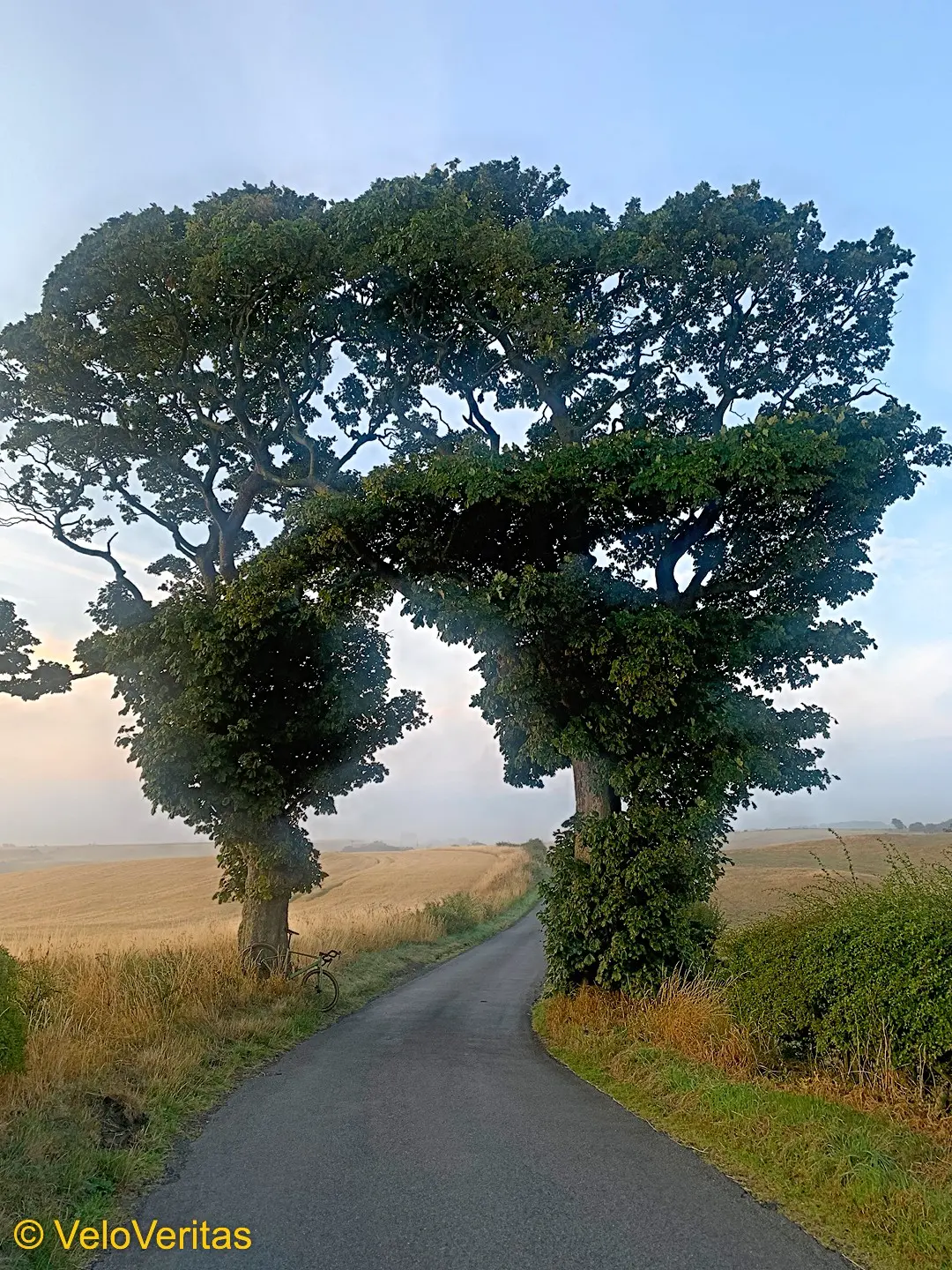
No one seems to know their history but they’re a treat for the eye, especially in the early morning light.
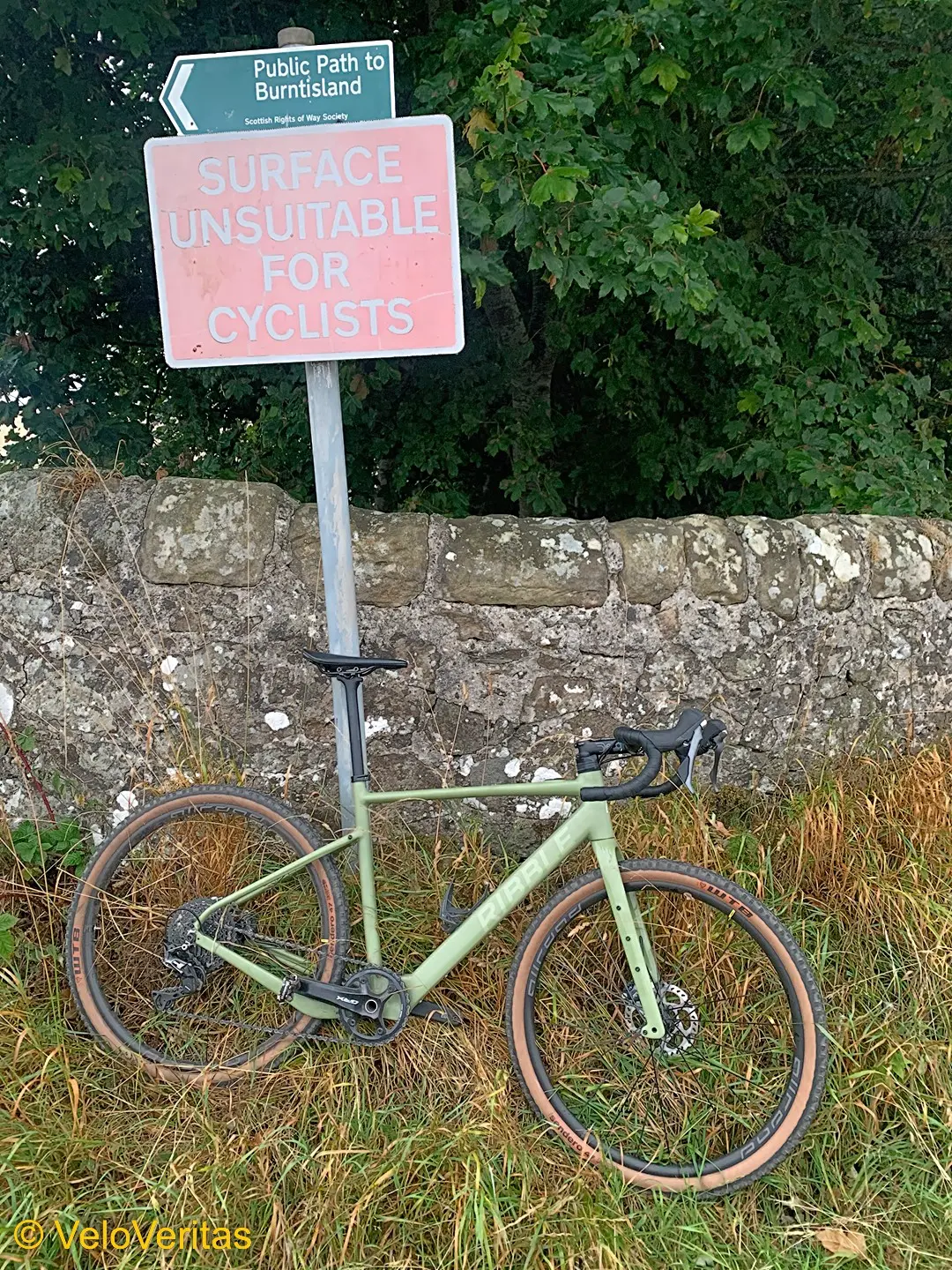
Pressing on up the long drag to the Binn ridge I came upon the sign which gives fair warning but which, as a typical cyclist I ignored, headed south and began to think that the, ‘suspension nonsense’ which I’ve always mocked might not be such a bad idea after all?
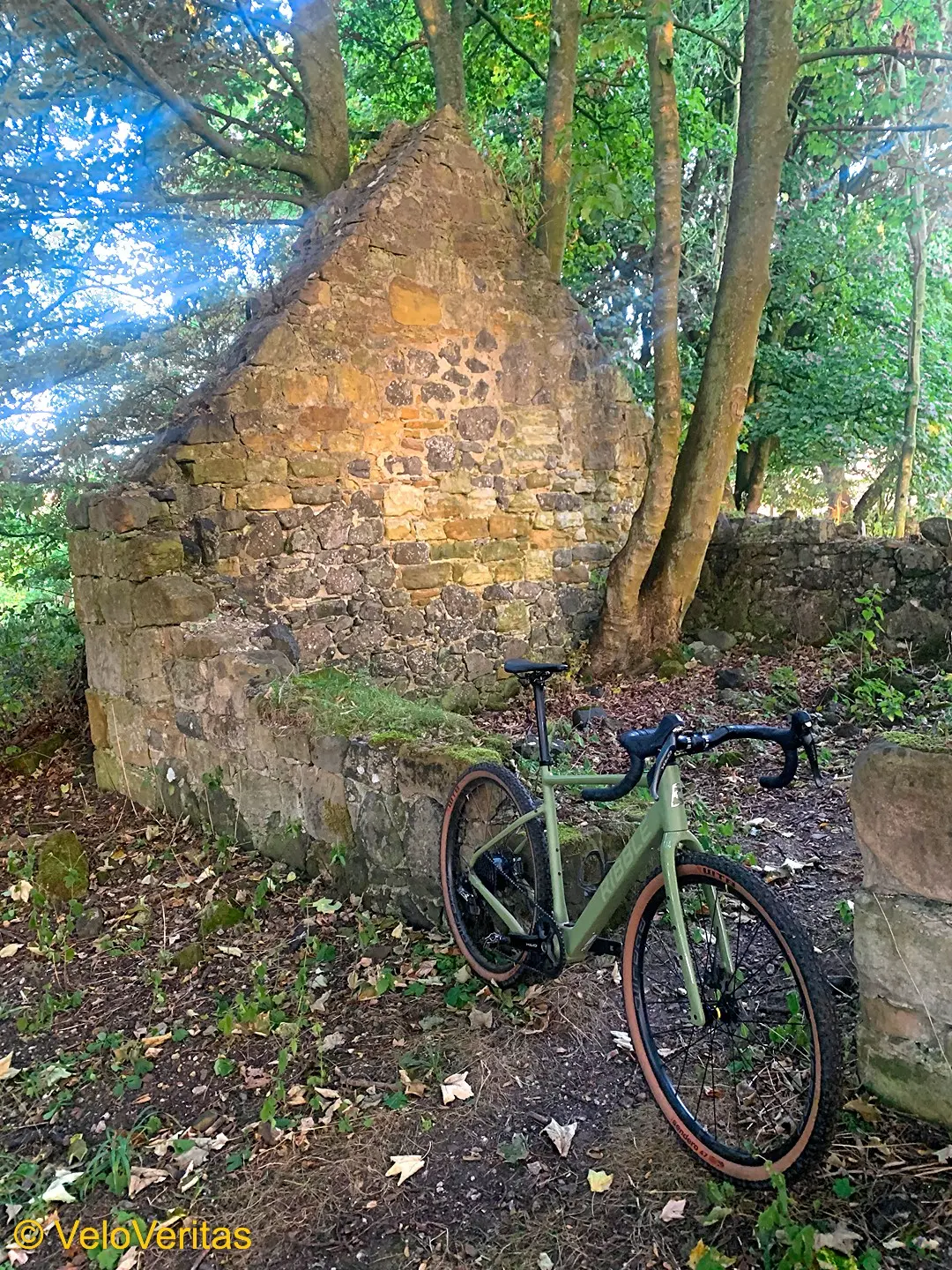
The object of plunging down the gnarly drop was to find the remains of a village of some 564 souls which stood on the slopes of the Binn and at one time boasted a Free Church Mission Hall, school, shop and football pitch.
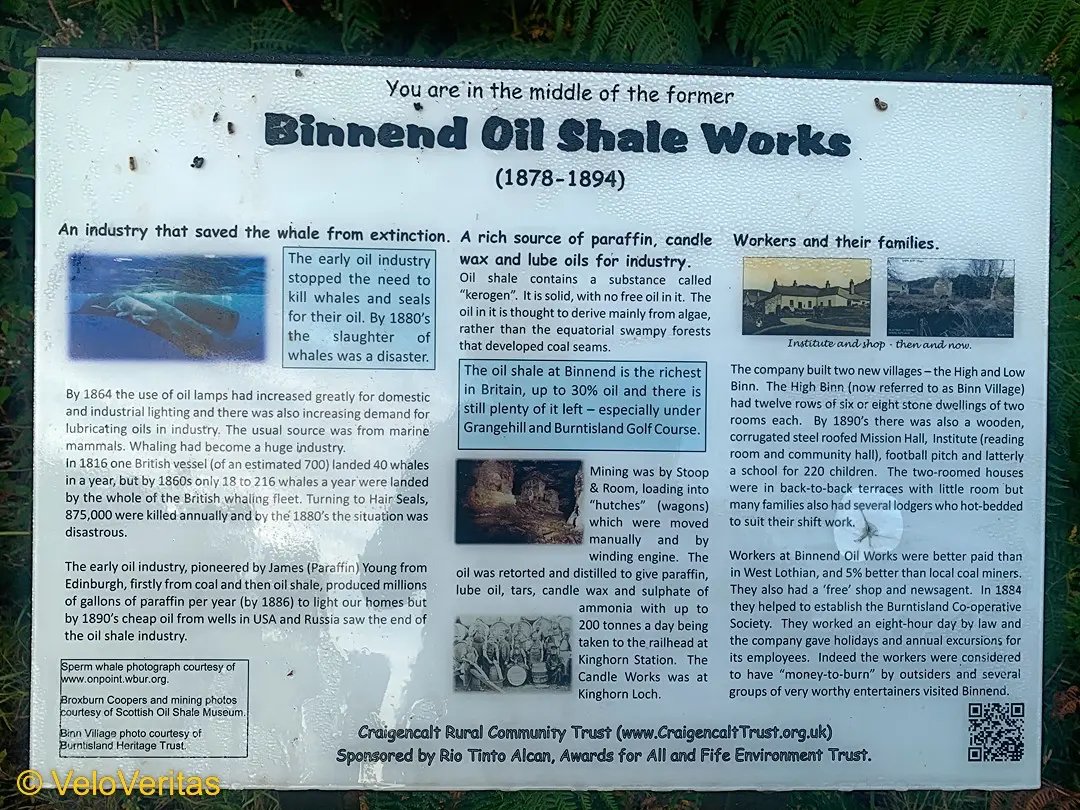
It was founded in 1881 to house workers in the large shale oil refining plant which stood opposite where Burntisland Golf Club now stands.
Nature has been quick to claim back what belongs her and now only ruins remind you of a vibrant village and industry.
Shale oil being usurped by cheaper oil imported from Russia and the USA.
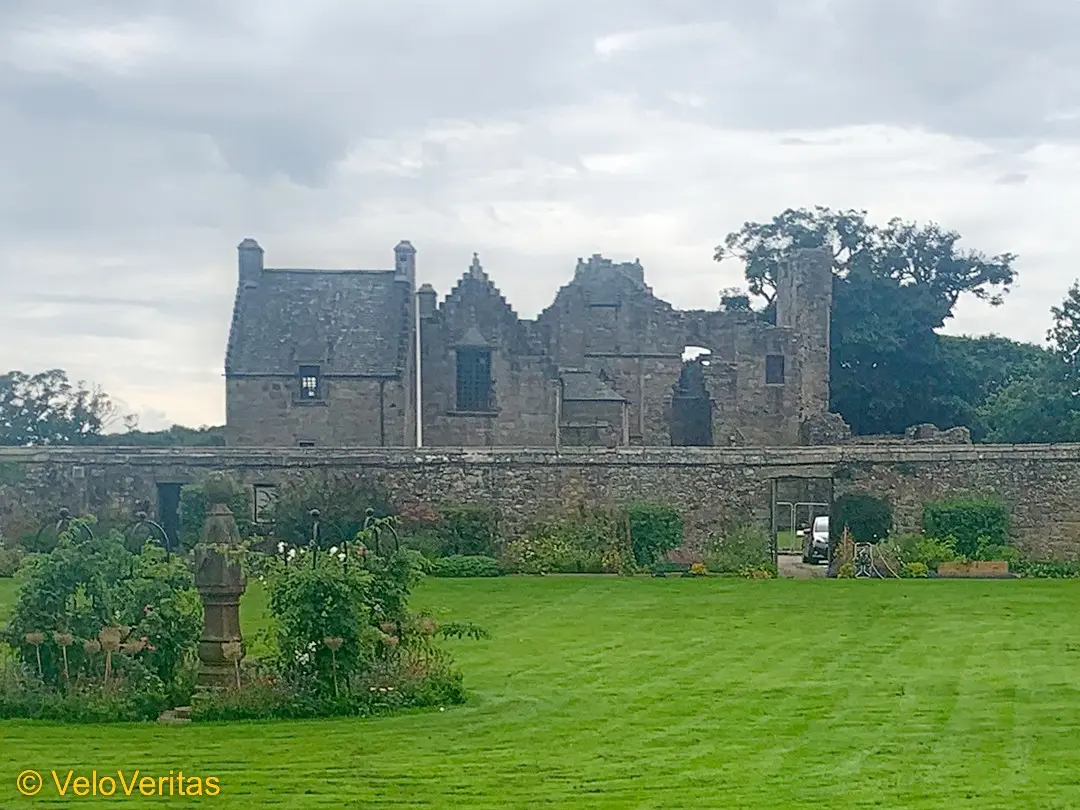
On to Aberdour and the castle. Legend has it there’s treasure buried there; the earliest parts of the building date back some 800 years and it’s one of the two oldest castles still standing in Scotland.
I’d have liked to get in to take some better pictures but it’s closed for, ‘high level masonry inspection’ and besides, I didn’t have the £6:00 entrance fee in me back pocket.
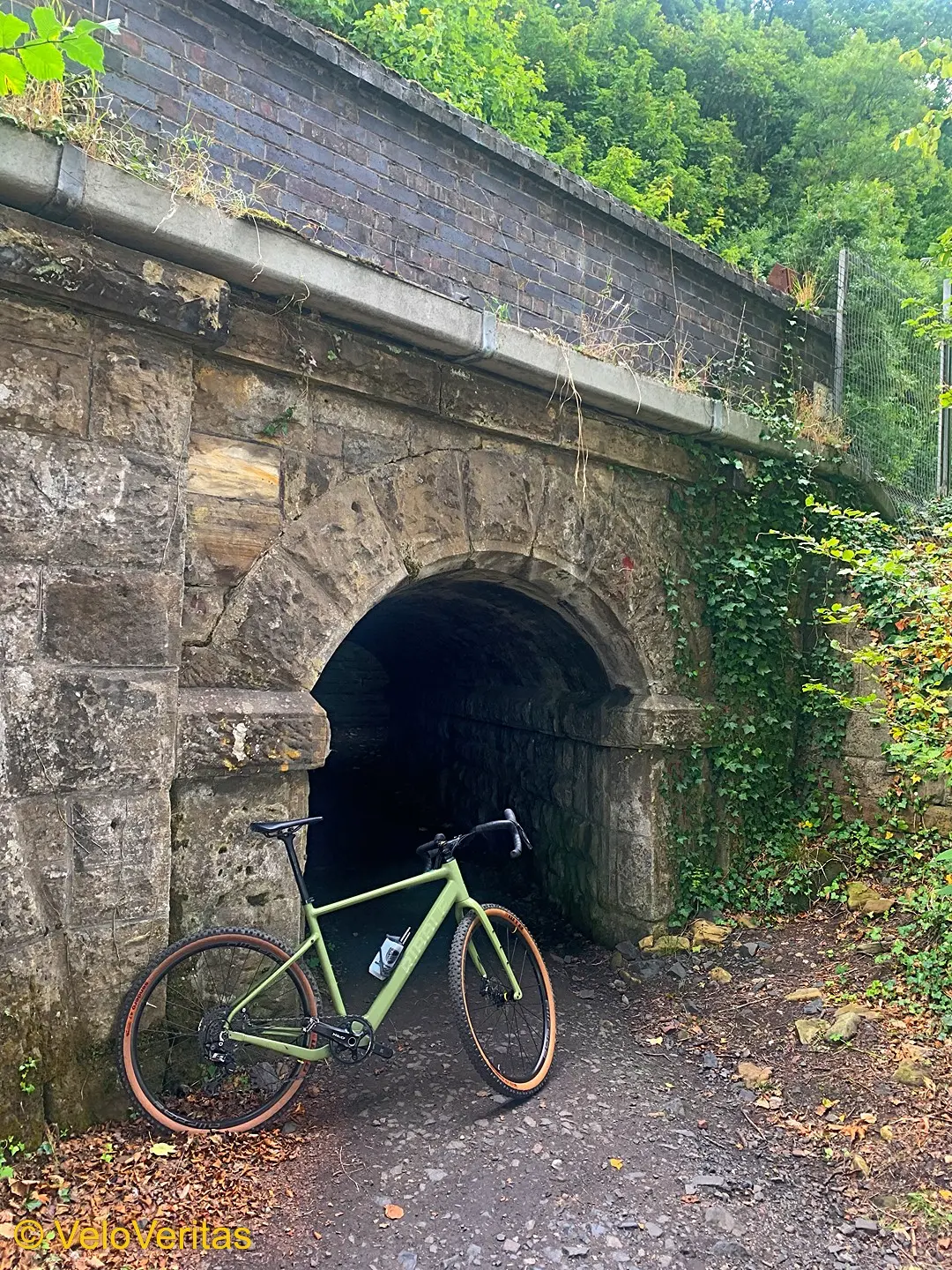
The Coastal Path does what it says on the tin and follows the Forth all the way to Burntisland, the surface varies between dirt with tricky, polished roots to gravel to nice smooth tarmac.
Initially the main Aberdeen to London rail line is on your left but there’s a wee bridge takes you under the track and there’s no more sea view, a high banking on your left and a fence or wall on your right until you arrive in Burntisland.
So named from a time back in history when the local fishermen’s huts burned down and the name stuck.
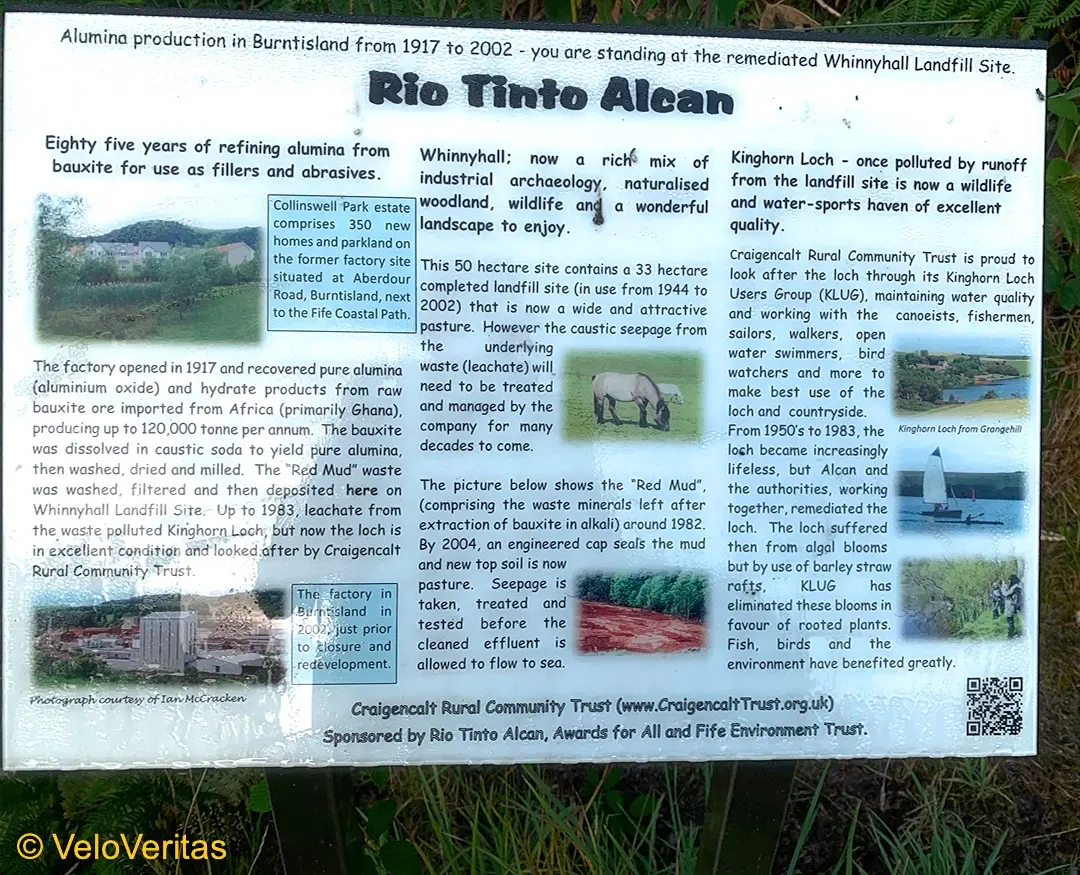
Shale oil wasn’t the only industry lost to Burntisland, when I was a younger man the ‘Ali Bam’ – the British Aluminium works dominated the town.
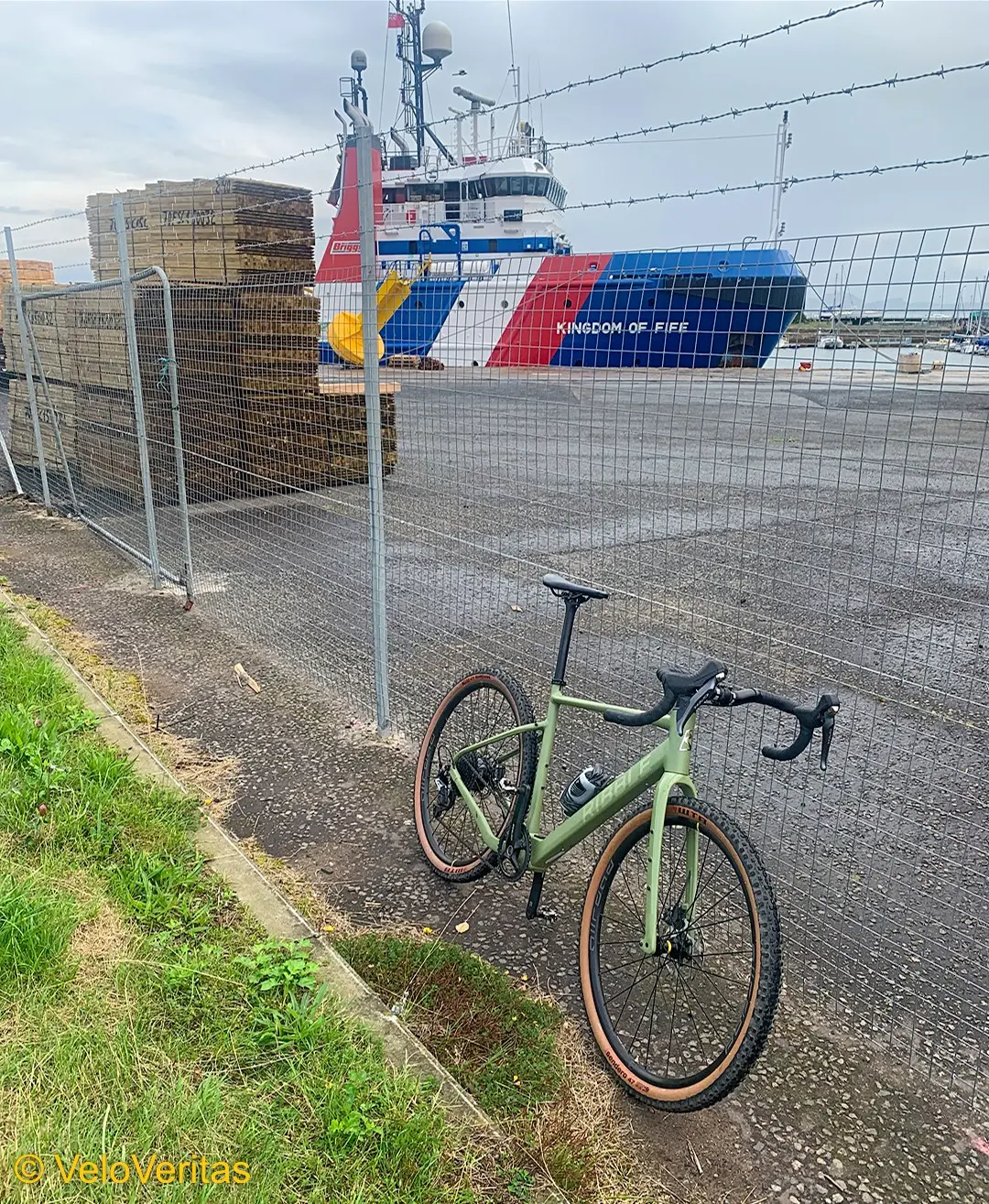
The plant refined alumina from raw bauxite ore which came into the docks from Ghana, the process leaving a fine film of red dust all over the town.
A housing estate now stands where the works once were and rig service vessels replace bulk carriers at the moorings.
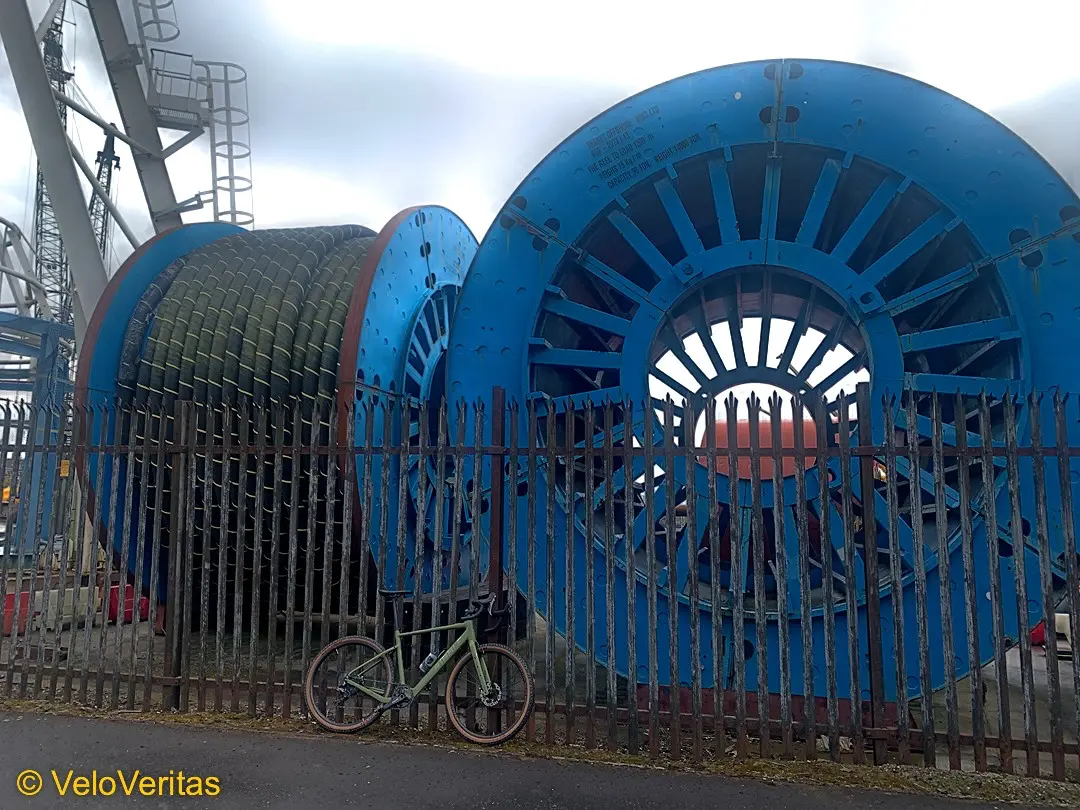
The Shipyard is still there though; now a fabrication facility for the oil industry; ships first rolled down the slipway in 1918 right up until 1969 when the last ship was launched.
The ‘path’ takes to the main coast road out of Burntisland but there’s a nice, fast cycle path and that doesn’t mean it takes a break from history.
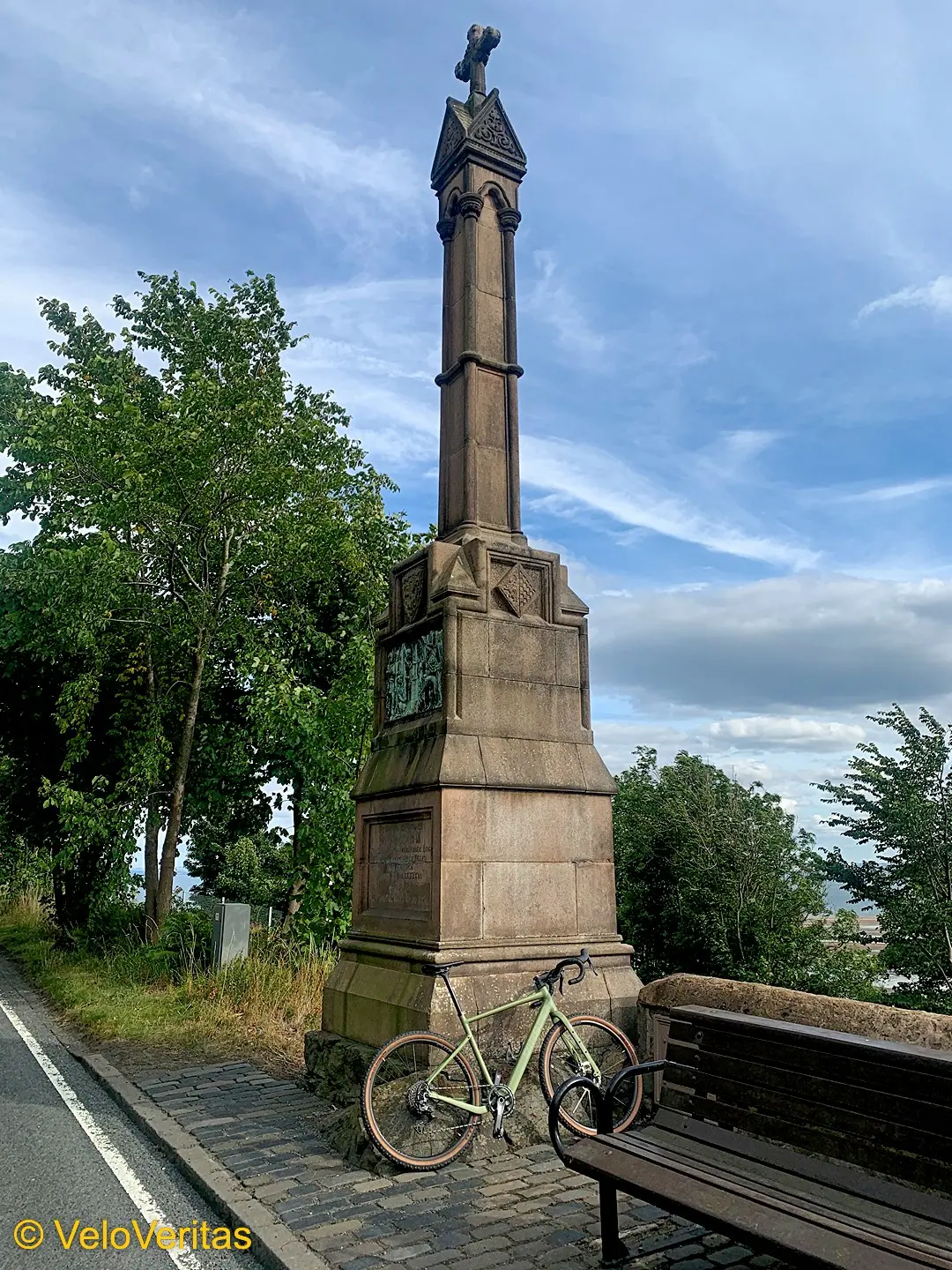
On the river side of the road between Burntisland and Kinghorn stands the monument to Alexander 111, Scotland’s last Celtic King.
A man for the ladies, he was warned not to take the tricky path from the ferry at Queensferry to where his young wife waited for him at Kinghorn Castle on a stormy night; but he ignored the warnings, his horse lost footing, with steed and monarch found dead on the rocks above the beach on the morning of 20th March 1286.
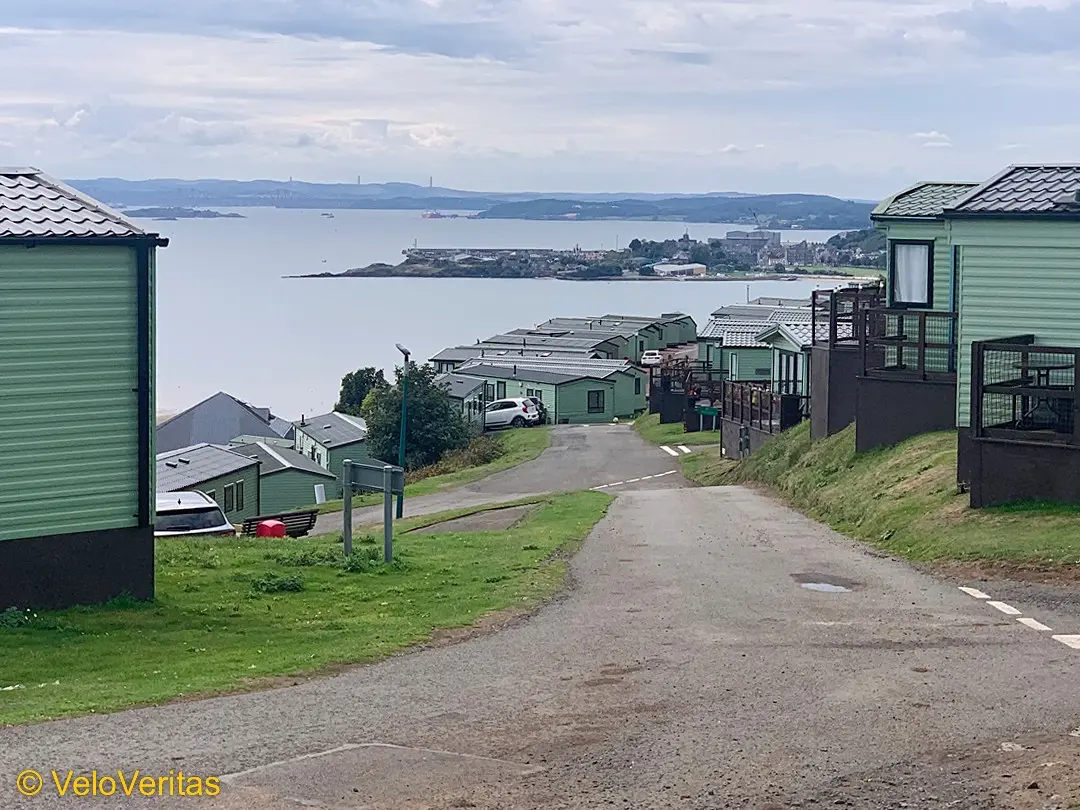
A tad incongruously, just across the way is Pettycur Bay Holiday Camp, scene of, ‘Life on the Bay’ TV show with the highest holiday homes enjoying stunning views back to Burntisland, the river and Lothians
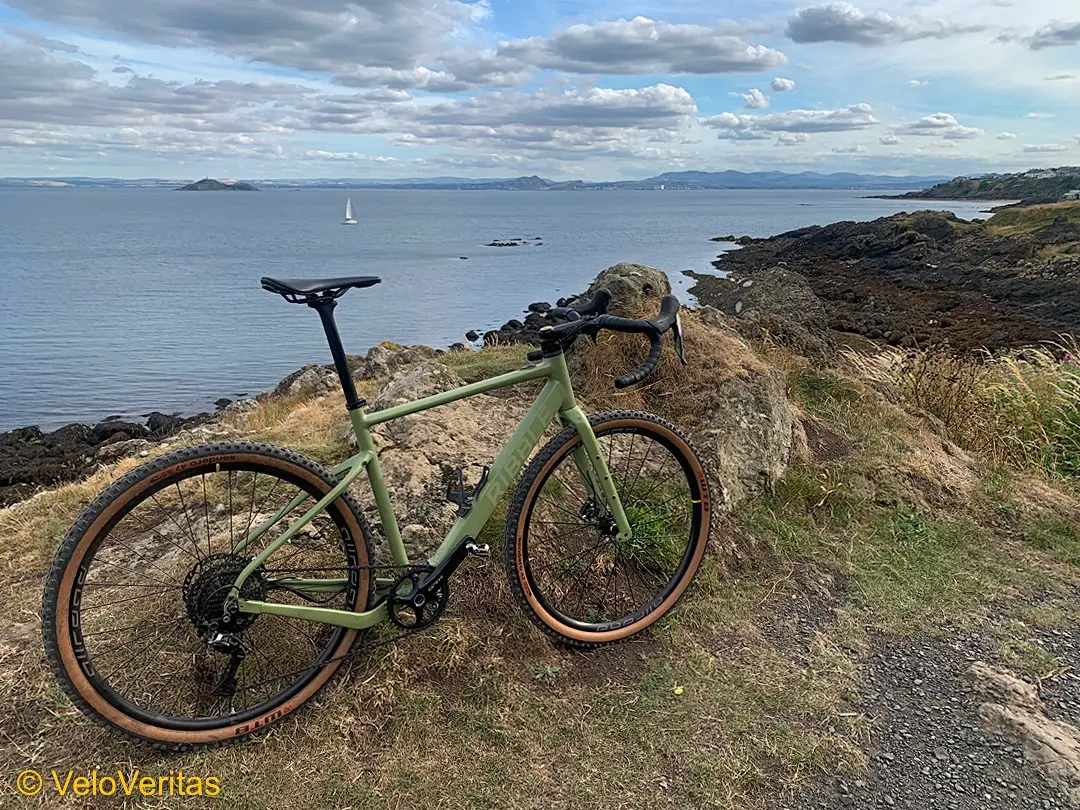
At Kinghorn we’re back on the gnarly stuff, fast gravel alternates with steps and those tricky sections where big polished rocks poke up to catch you unawares.
The views are stunning though, out across the Forth to Edinburgh, the big island you see is Inch Keith where legend says that in 1493, King James IV transported a mute woman and two infants to see what would be, ‘the language of God ?’
Some say it’s a fable and there’s no solid record of the result of this grim experiment.
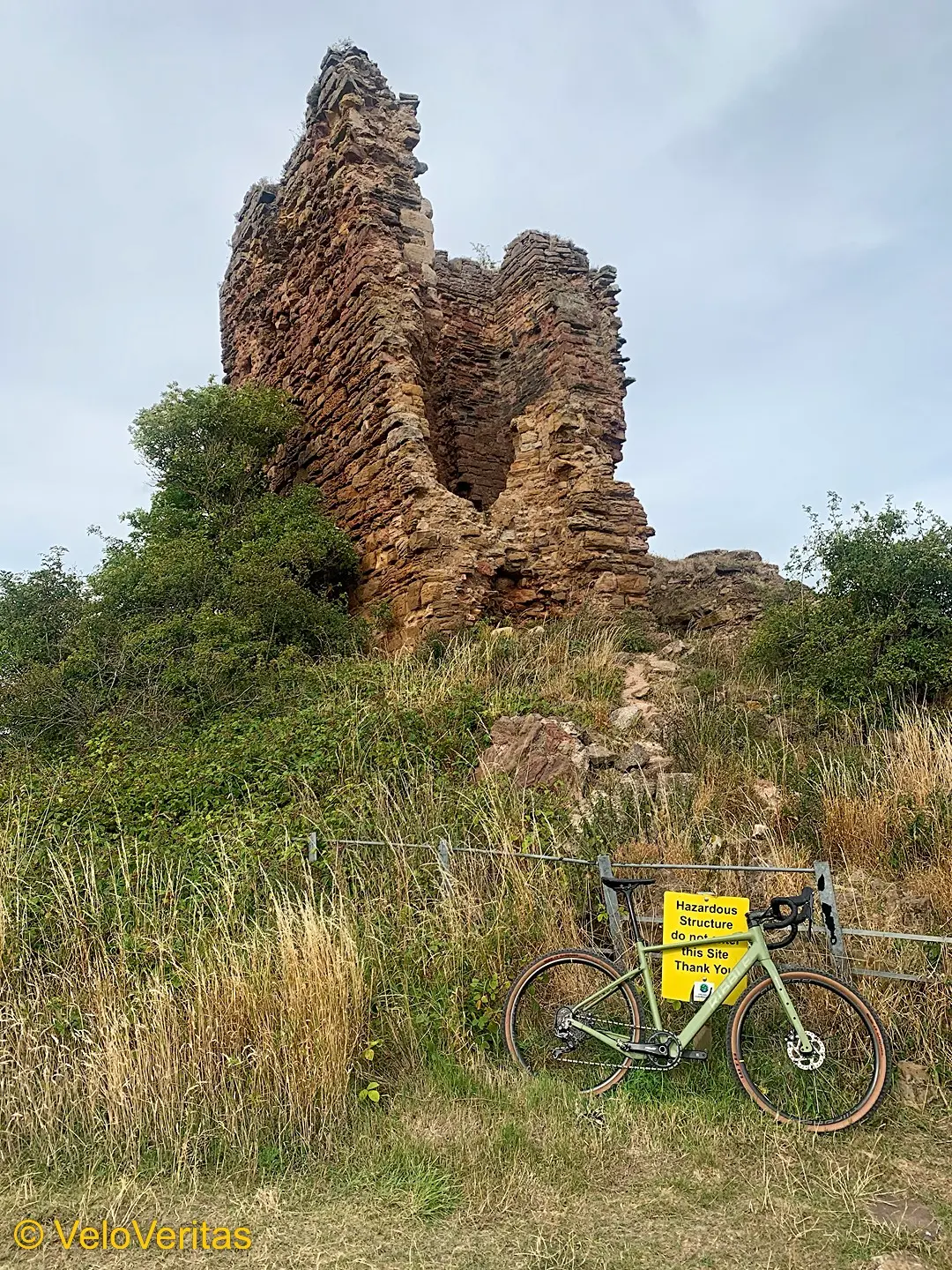
Seafield Tower stands beside the path just west of Kirkcaldy, now a ruin but back in 1542 it was the stately home of the Multrare family.
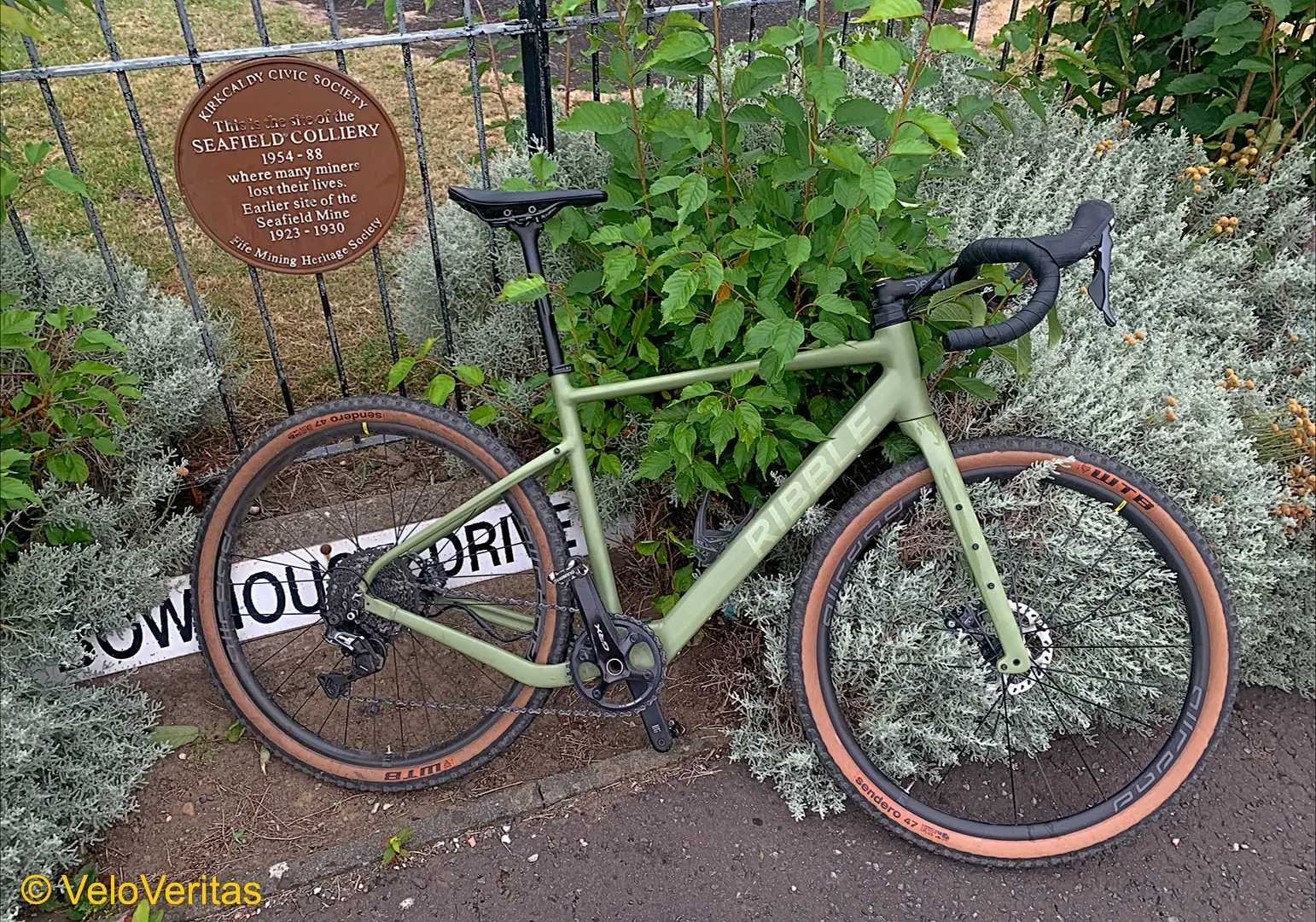
Past the tower there’s a private housing estate which sprawls along the coast on the site of what was the vast Seafield Colliery complex which along with the Frances Colliery at the east end of the town, framed Kirkcaldy.
Now all that remains is a plaque beside a children’s play park, a sad memory of industry which once supported thousands.
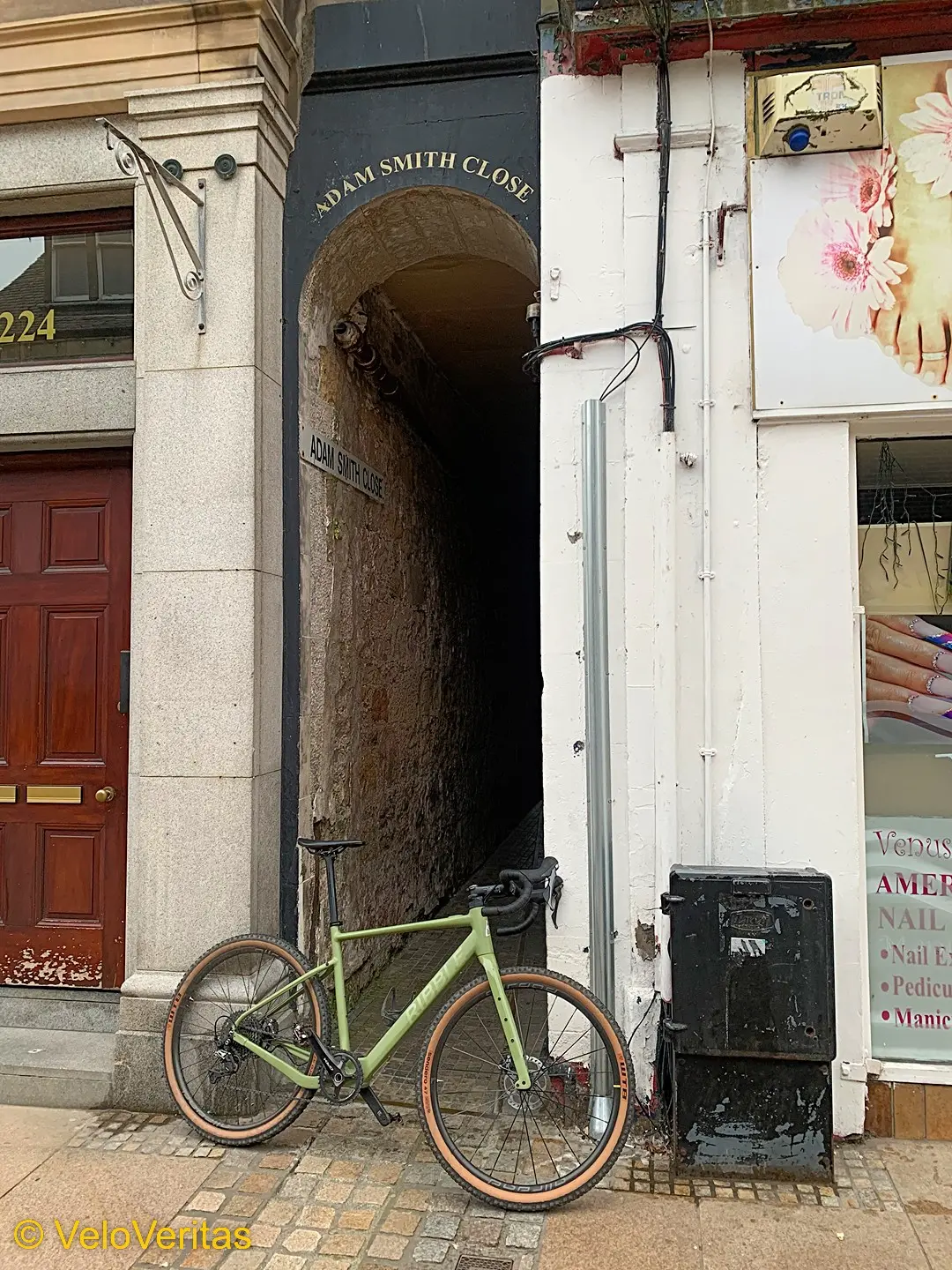
Kirkcaldy’s most famous son – no, not the late darts player, Jocky Wilson – is Adam Smith, economist and philosopher who was a pioneer of political economy.
There’s a concert hall in the town which bears his name but we don’t really give him much recognition; albeit there’s ‘Adam Smith’s Close’ a 328’ long passage from the High Street down to the promenade with key events in his life inscribed in the paving slabs beneath your feet – which is about as much as the great man gets.
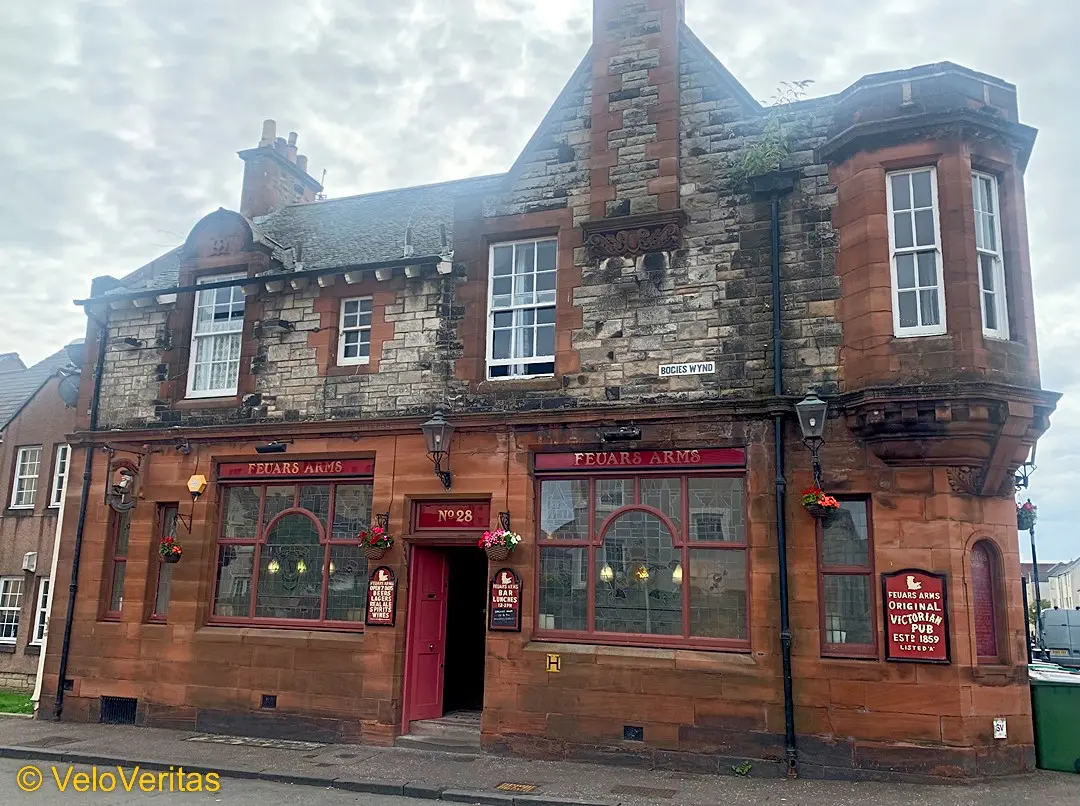
I began my last wanderings with one of my favourite Kirkcaldy watering holes, so best include another as my meanderings take me back to Dysart.
The Feuars Arms is the real deal, an original Edwardian pub with acres of Doulton ceramic tiles and beautiful stained glass windows.
There’s more space behind the bar than usual in a pub to accommodate the extra staff needed to cope with the human waves washing in from the nearby factories.
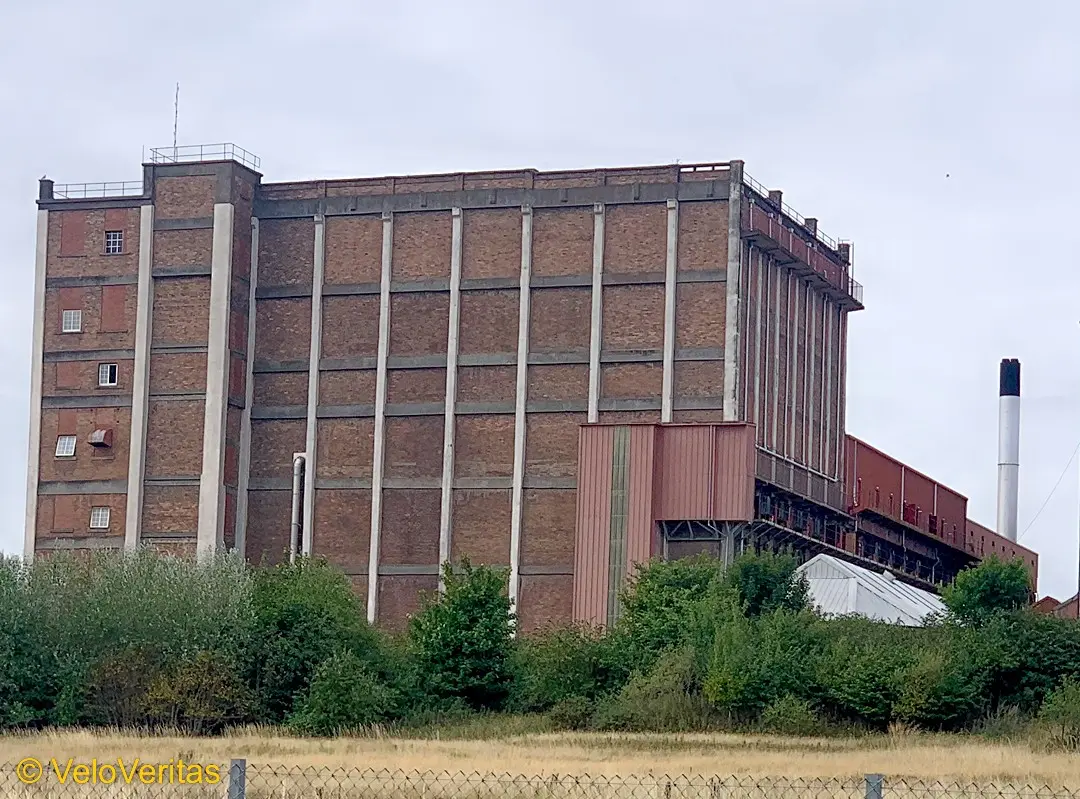
And let’s close with what’s left of those factories and the industry that made Kirkcaldy famous and gave it a unique but not unpleasant – but then I’m a Kirkcaldy boy – aroma.
The smell of linseed oil; there’s even a poem about it.
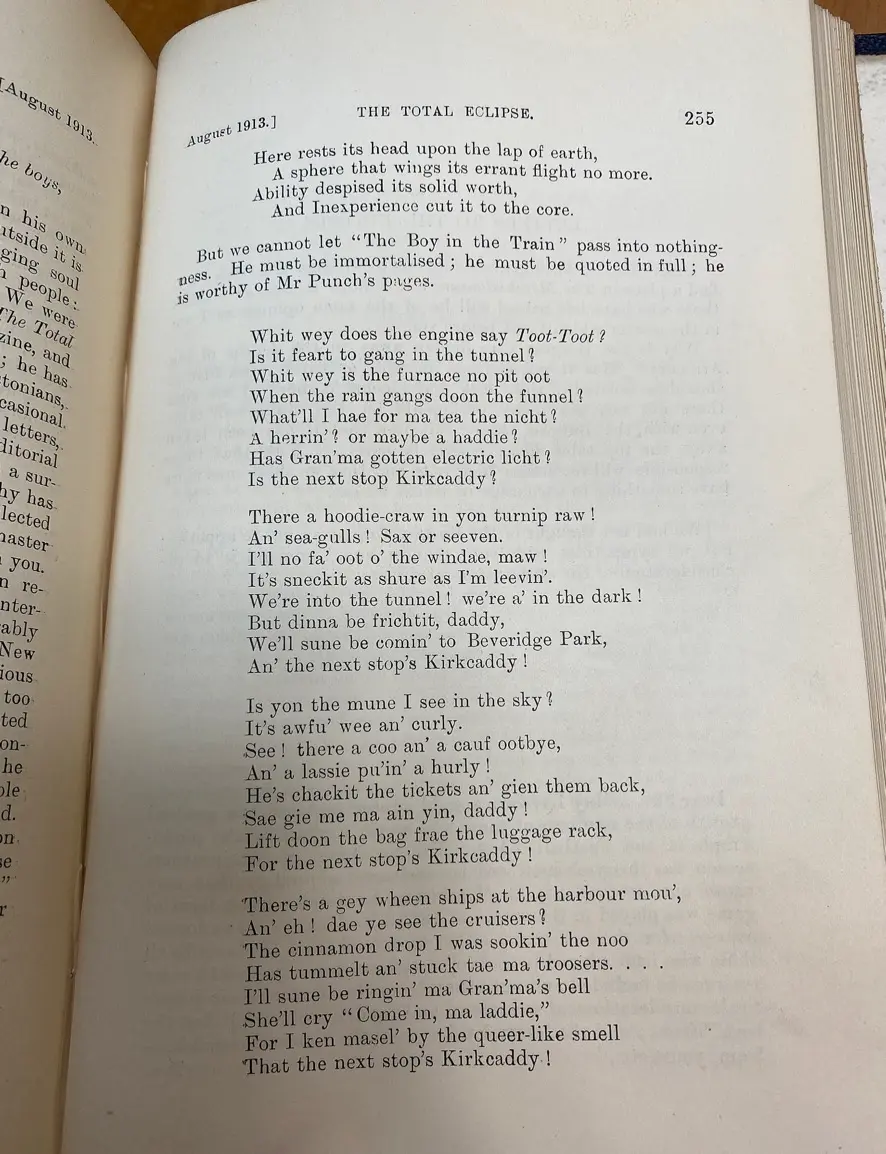
Linoleum is a floor covering made from solidified linseed oil in combination with wood flour, or cork dust, over a burlap or canvas backing.
The reason for the buildings being so tall was that once the linseed based paste was applied to the canvas backing it had to dry, the heavy material was draped over steel beams at the top of the buildings – much as when applying past to wallpaper then draped down to just above the floor level, this distance was around 90’ and determined the length of the rolls.
Yours truly worked there when he left school – the best job I ever had…
Next time on the Fife Coastal Path we’ll head further east…
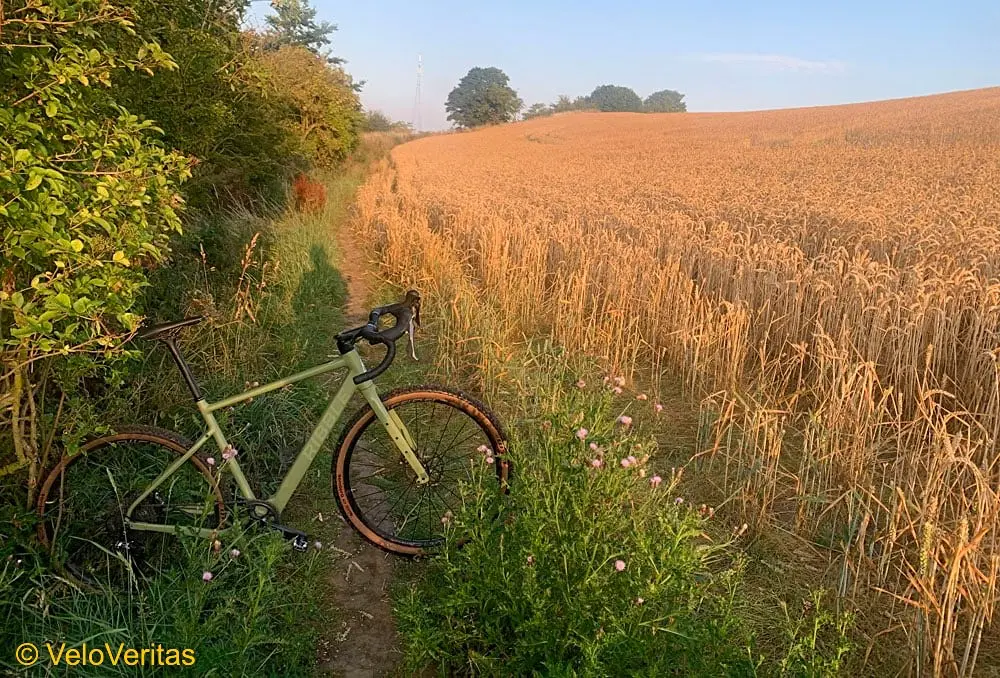
* * *
Check out Part One and Part Three of Ed’s journey on the Fife Coastal Path.



